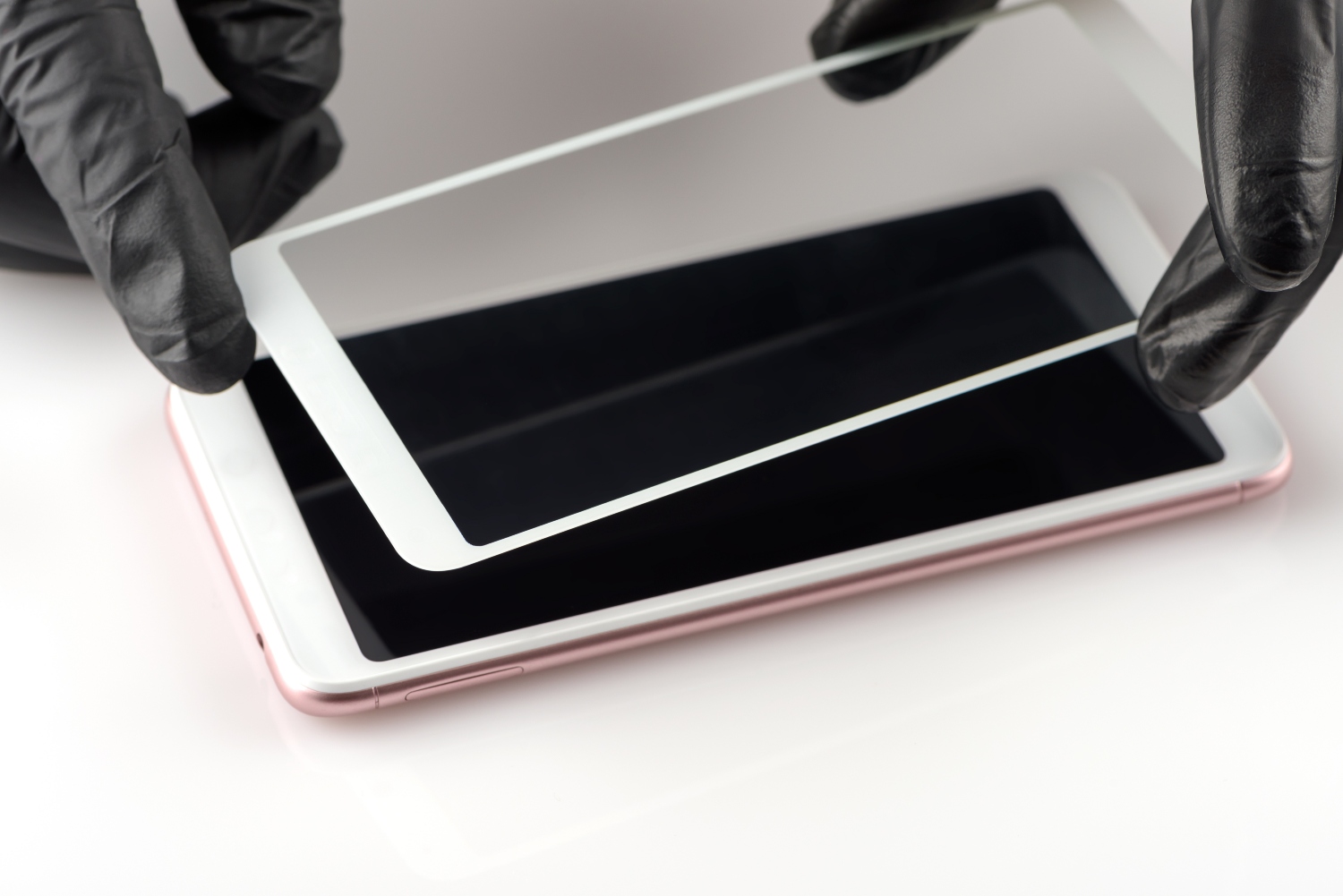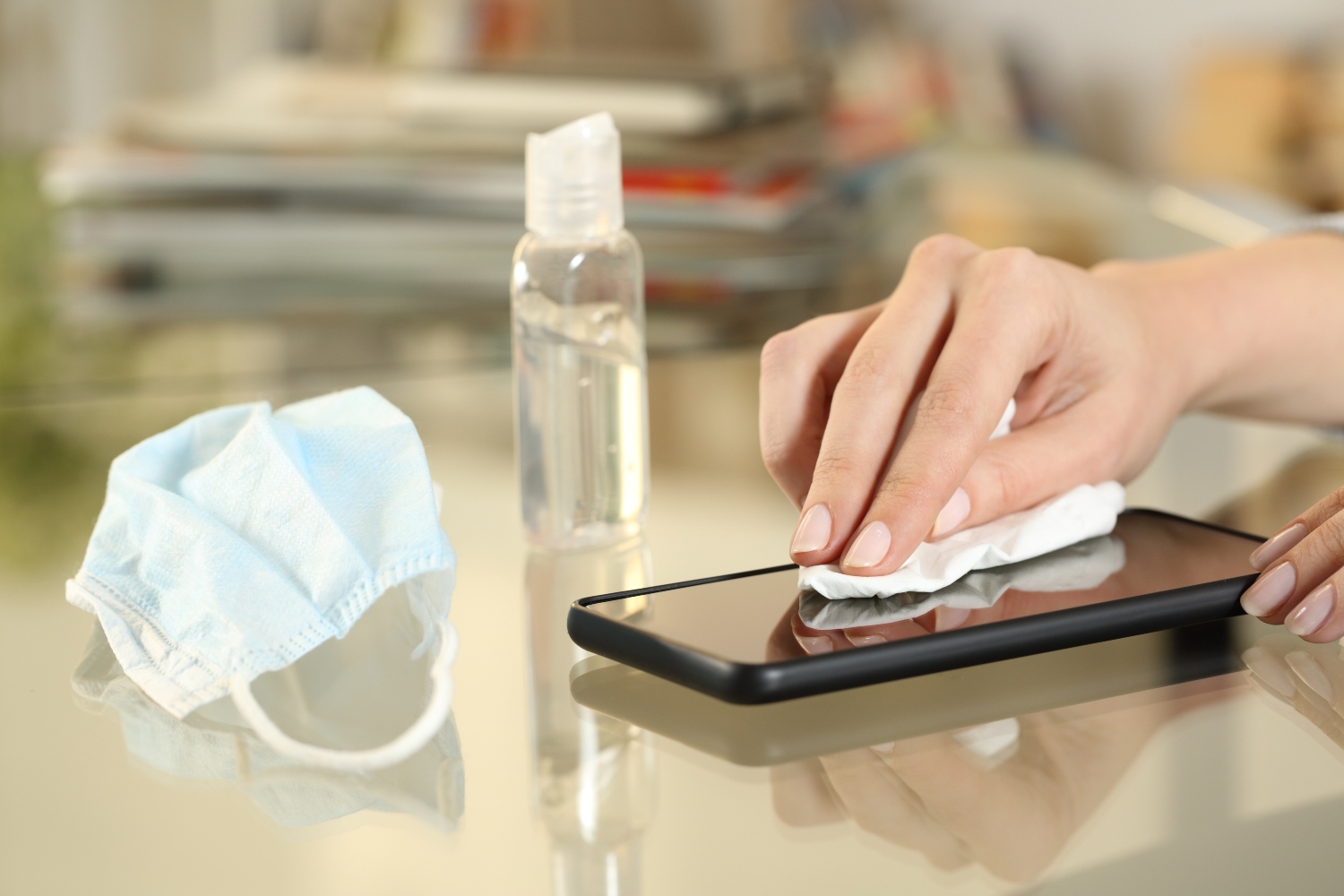Latest News
What’s the difference between plastic and glass screen protectors?
By |
14th April, 2023 |
Categories:
With a handy screen protector, you can make ‘phone drop fear’ a thing of the past. But which one is best – plastic or glass? Let’s find out.

That beautiful big display screen is probably one of the main things that attracted you to your mobile phone. But a few scratches can soon take it from stunning to shabby. Sure, you can protect your device with mobile phone insurance in the UK and fit a screen protector. But which one is best? In this article we’ll explain the difference between plastic and glass screen protectors to see which one could be right for you.
Having such desirable devices on us at all times means they’re always at risk of damage, loss, theft and other problems. That’s why so many smartphone lovers come to Gadget Cover for great value mobile phone insurance in the UK.
Why a screen protector is still a wise investment
Screen technology has come on in leaps and bounds over the past few years, becoming not only a lot sharper, more colourful, and super responsive but also more scratch-resistant. For example, even if you rub it with your keys or loose change, Corning's Gorilla Glass Victus won’t scratch, while Apple’s Ceramic Shield tech on the iPhone claims to be even tougher.
Despite the marketing hype, all of these screens are capable of being scratched. Contrary to what some people believe, in the right circumstances any mobile phone screen is susceptible to scratches and cracks. Even a few grains of sand in your pocket or bag can wreak havoc on an unprotected screen!
So yes, your screen can still be scratched. And while a screen protector will never offer 100% protection, fitting one to your phone certainly reduces the risk – and your stress levels!
Then, if something does rub across the front of your phone screen, it’s more likely to be the protector that gets scratched rather than the silky smooth screen beneath. Better yet, if the protector gets damaged you can simply replace it, while the actual screen stays in perfect condition for a potential resale later.
Can you really afford not to fit a screen protector? To give you an idea of how much a screen replacement can cost, here’s the estimated out-of-warranty screen repair cost for some of the UK’s favourite phones.
- Samsung Galaxy S22 Ultra – Maximum repair price of £259 by an authorised and qualified Samsung expert including replacement battery.
- Samsung Galaxy Z Fold 4 – Maximum repair price of £539 for that state-of-the-art folding screen.
- iPhone 14 Pro – Estimated repair cost of £349, according to Apple’s Get an Estimate tool.
- iPhone 11 – Estimated repair cost of £219 for this popular model of iPhone.
This is only a brief selection, consumer champion Which? estimates that the average repair bill for a broken screen is around £170. And with so many new phones featuring intricate components, such as under-display fingerprint sensors and pop-up front-facing cameras, it’s easy to see how repair costs can rocket.
Fortunately, mobile phone insurance in the UK arranged through Gadget Cover will even cover minor screen cracks. And if your device can’t be repaired, we’ll just replace it. Sorted!
Plastic and glass screen protectors – a look at the pros and cons
With the high cost of screen repairs, it’s more important than ever to protect your device from damage. A screen protector really has become a must-have accessory for any smartphone owner nowadays.
But when it comes to searching for the perfect screen protector for your smartphone, you’ll soon find there’s a bewildering number of brands, types and prices. To make the process a little easier, we’ve looked at the pros and cons of the most common types – plastic and glass screen protectors.
Plastic screen protectors
There are two main types of plastic screen protectors available on the market. The most likely type you’ll come across is made from Polyethylene Terephthalate (PET). The same material used in plastic water bottles and food containers, PET protectors are constructed from a polyester film with a scratch-resistant coating on one side and a silicone glue on the other.
Pros of PET protectors:
- In-screen fingerprint friendly
- Clear and high transparency
- Good protection against small scratches
- Great budget option
- Light and thin so less visible when applied to your phone
- Smooth to the touch
Cons of PET protectors:
- Bit stiff, so if your phone has curved edges, it won’t cover the whole screen
- Offers least amount of protection from scratches, drops and impacts
- Will need to be replaced more often than glass screen protectors
- Can discolour over time
The other type of plastic screen protector are those made from Thermoplastic Polyurethane (TPU). However, while they offer better impact protection than PET, some self-healing properties, and work well with curved screens, they’re difficult to install, have a ‘rubbery’ feel and can cause screen glare.
Tempered glass screen protectors
Often offering the best screen protection available on the market, tempered glass is considered the high-end option when it comes to keeping your flashy smartphone safe.
Pros of tempered glass screen protectors:
- Crystal-clear glass provides more screen visibility
- Smooth feel just like your actual screen
- Reduced glare
- Hard enough to resist most scratches
- Excellent protection from drops and bumps
- Easy to install and clean
- Special coating to prevent build-up of fingerprints and grease
- Some come with additional features like privacy or anti-glare coatings
Cons of tempered glass screen protectors:
- Won’t fit when used with some cases
- Thicker than plastic so more noticeable
- Lack self-healing qualities
- Can be expensive compared to plastic
So, which one to choose? That will really come down to your own individual preference but most people will probably be best off with a tempered glass protector.
Offering the most protection and most similar feel to your phone’s original screen, they are now available quite cheaply.
Four of the best screen protectors for 2023
There are hundreds of options to choose from but here’s a quick list of just four of our favourites to buy now.
- ZAGG InvisibleShield Glass XTR D30 – This easy to install screen protector is super-thin and super-strong but is on the expensive side.
- Otterbox Google Pixel 6 Screen Protector – We always recommend buying a screen protector that’s designed for your specific phone model. Certified by Google itself, this is a great option for Pixel 6 fans.
- Belkin ScreenForce TemperedGlass Privacy Treated Screen Protector – From a highly respected name like Belkin, you’re sure to receive excellent protection for your phone. Comes with a lifetime warranty.
- Eono UltraTough Premium Tempered Glass Screen Protector – An excellent budget option.
Top tips for protecting your screen from damage

Having the right mobile phone insurance in the UK could make it a lot easier to get your phone screen fixed after an accident. However, wouldn’t it be better to prevent damage from happening in the first place?
Check out these quick top tips for protecting your mobile phone screen from damage.
- Invest in a phone case. A sturdy phone case is the real hero when it comes to providing that extra layer of protection for your mobile phone. They are particularly useful at protecting the edges where the screen meets the body.
- Keep your phone face up when not in use. Placing your phone face down can increase the risk of scratches or cracks on the screen.
- Avoid placing your phone next to sharp objects like keys and coins. These can easily scratch a delicate phone screen.
- Steer well clear of extreme temperatures. Keep your phone away from direct sunlight, heat sources, and very cold temperatures.
- Avoid dropping your phone. Obvious really, but drops are the most common cause of screen damage. Be careful when handling your phone, especially when using it in crowded places such as concerts or sporting events or when travelling around.
- Clean your phone screen regularly. Dirt, oil, and debris can accumulate on your phone screen, causing scratches or reducing its visibility. Use a soft cloth or a cleaning solution specifically designed for phone screens to keep your screen clean.
By following these tips, you can protect your mobile phone screen from damage and prolong its lifespan. Remember to handle your phone with care and invest in high-quality protective accessories to ensure the best protection.
Find great value mobile phone insurance in the UK with Gadget Cover
Whether plastic or glass, whatever screen protector you choose, the dedicated team at Gadget Cover will search to find you mobile phone insurance in the UK that suits your requirements and budget.
With our mobile phones being so central to our personal and working lives, we all know how vital it is to protect them from the threat of being damaged, lost or stolen.
Get covered through us and you won’t have to worry about accidental damage, liquid damage, theft, breakdown, unauthorised usage and even loss.
Finding mobile phone insurance in the UK is easy at Gadget Cover.


